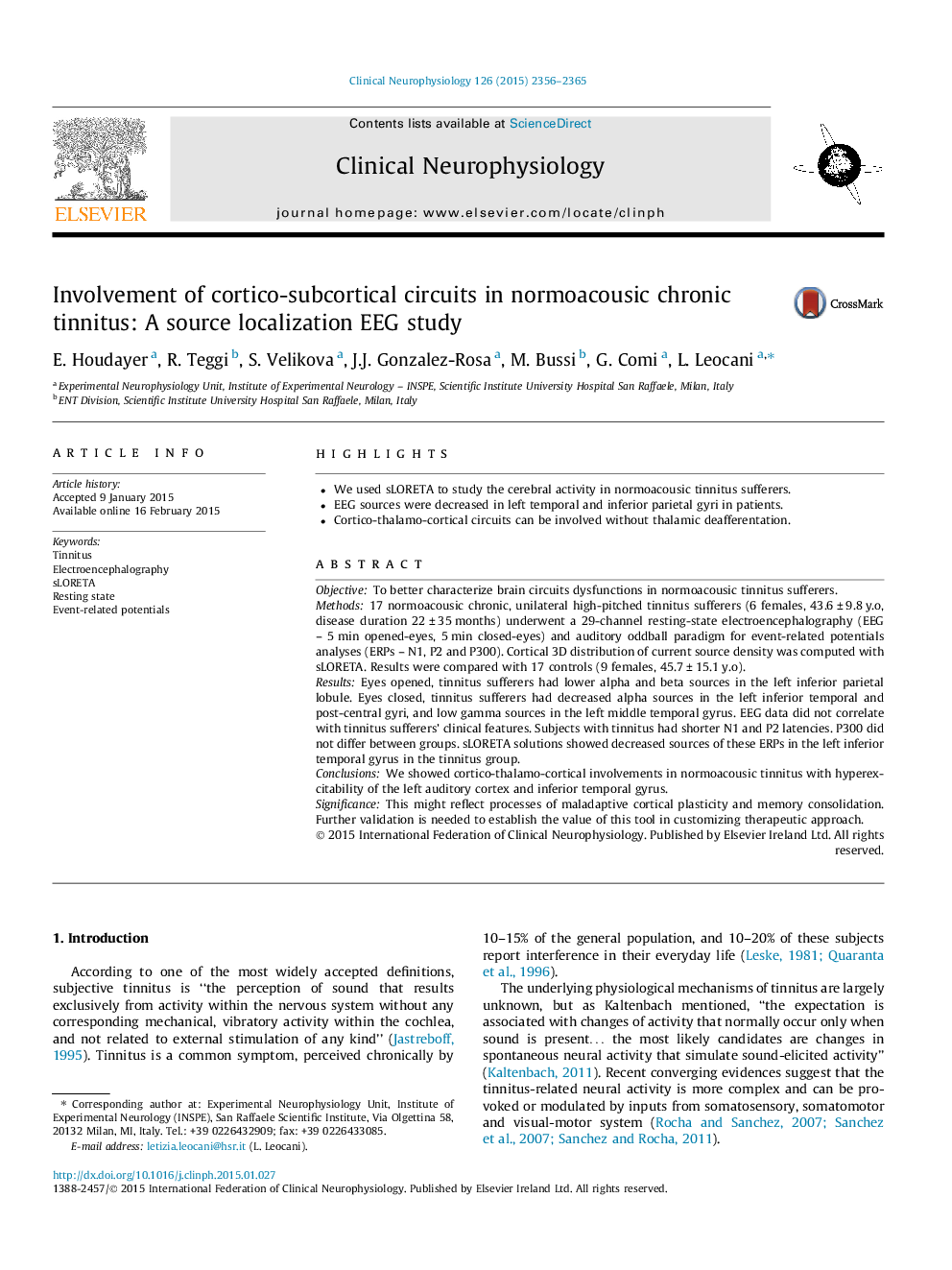| Article ID | Journal | Published Year | Pages | File Type |
|---|---|---|---|---|
| 3043149 | Clinical Neurophysiology | 2015 | 10 Pages |
•We used sLORETA to study the cerebral activity in normoacousic tinnitus sufferers.•EEG sources were decreased in left temporal and inferior parietal gyri in patients.•Cortico-thalamo-cortical circuits can be involved without thalamic deafferentation.
ObjectiveTo better characterize brain circuits dysfunctions in normoacousic tinnitus sufferers.Methods17 normoacousic chronic, unilateral high-pitched tinnitus sufferers (6 females, 43.6 ± 9.8 y.o, disease duration 22 ± 35 months) underwent a 29-channel resting-state electroencephalography (EEG – 5 min opened-eyes, 5 min closed-eyes) and auditory oddball paradigm for event-related potentials analyses (ERPs – N1, P2 and P300). Cortical 3D distribution of current source density was computed with sLORETA. Results were compared with 17 controls (9 females, 45.7 ± 15.1 y.o).ResultsEyes opened, tinnitus sufferers had lower alpha and beta sources in the left inferior parietal lobule. Eyes closed, tinnitus sufferers had decreased alpha sources in the left inferior temporal and post-central gyri, and low gamma sources in the left middle temporal gyrus. EEG data did not correlate with tinnitus sufferers’ clinical features. Subjects with tinnitus had shorter N1 and P2 latencies. P300 did not differ between groups. sLORETA solutions showed decreased sources of these ERPs in the left inferior temporal gyrus in the tinnitus group.ConclusionsWe showed cortico-thalamo-cortical involvements in normoacousic tinnitus with hyperexcitability of the left auditory cortex and inferior temporal gyrus.SignificanceThis might reflect processes of maladaptive cortical plasticity and memory consolidation. Further validation is needed to establish the value of this tool in customizing therapeutic approach.
